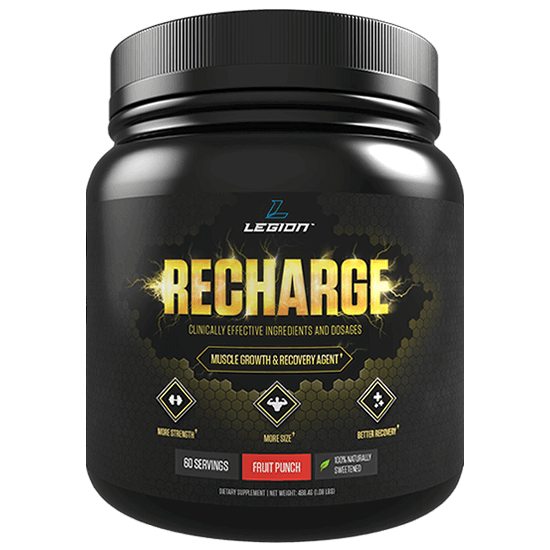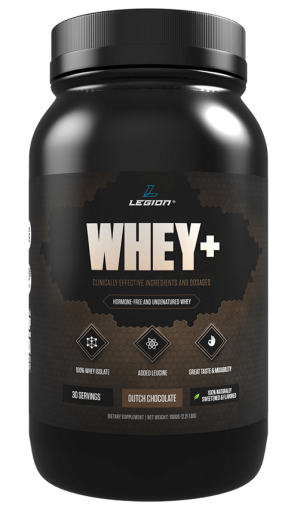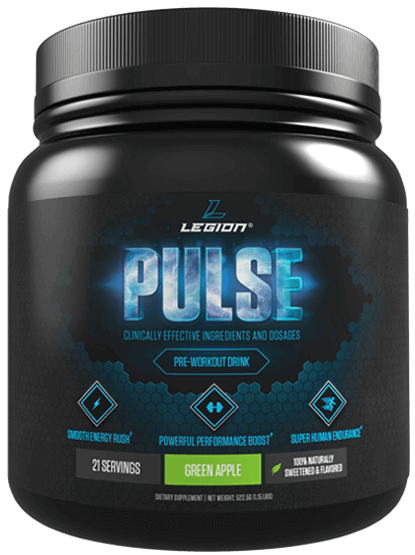What if I told you that you could maintain and even gain muscle and strength in as little as 45 to 60 minutes per week?
And what if I wasn’t trying to pitch you on a PDF, pill, or powder?
Well, give me ten minutes and I’ll give you the “secret,” right here in this article.
(Alright, it’s less of a secret and more a couple of simple, science-based strategies, but it’s helpful nonetheless.)
And even if you’re not looking for a “lazy” way to stay ripped, this information can benefit you, too.
Because while you might be going great guns right now…
- Those early morning workouts 3 to 5 times per week, every week.
- Those sacrifices you’re making to stick to your meal plans.
- Those bruising late-night cardio sessions.
Let’s not forget that life has a way of throwing us curve balls.
You know…that new job might mean no more bright-and-early workouts. That family obligation might impose and replace the time you’d normally spend meal prepping.
Travel happens. Holidays happen. And sometimes we just lose motivation and skid for no good reason (oh, to be human).
Well, that’s why you need to read this article.
It’s going to give you a simple plan to maintain those pretty biceps and razor-sharp abs even when your routine goes to hell.
- The Easiest Way to Maintain Muscle and Strength
- The Best Workouts for Maintaining Muscle & Strength
- What About Diet?
- What About Cardio?
- What About Supplements?
- The Bottom Line on Maintaining Muscle & Strength
Table of Contents
+Want to listen to more stuff like this? Check out my podcast!
The Easiest Way to Maintain Muscle and Strength
Here’s one of the great things about being in great shape:
It’s much easier to stay fit than it is to get there in the first place.
While training 3 to 6 times per week is best for making gains, you don’t have to work nearly as hard to protect your gains.
Once you’ve “paid your dues,” you can maintain your muscle and strength in as little as 45 to 60 minutes of exercise per week.
Yes, you read that right.
And if you know what you’re doing with your diet, you can stay lean and mean as well.
Case in point:
In a study conducted by scientists at the University of Alberta, 18 competitive female rowers went from 10 weeks of training 3 times per week to training once or twice per week for 6 weeks.
The result?
They gained strength in two exercises and maintained strength in the remaining ones.
A study by researchers at the University of Alabama at Birmingham is also worth reviewing.
It had seventy untrained adults start with 4 months of weightlifting 3 times per week, and then the subjects were divided into three groups for an additional 8 months:
- Group 1: No exercise.
- Group 2: One workout per week – 3 sets, 8-12 reps
- Group 3: One workout per week – 1 set, 8-12 reps
The no-exercise group lost all gains, of course, but both groups doing one session per week were able to maintain or increase their numbers.
That is, they cut their total weekly workout time down by two-thirds but saw no reductions in performance in the gym.
And get this:
While the younger subjects (20 to 35 years old) gained more strength and size than the older folk (60 to 70 years old) during the initial four-month phase, the oldies maintained their gains equally well after reducing workout frequency.
You really can stay fit at any age!
Now, if you’re like me and have spent at least 4 to 6 hours in the gym every week for many years, you’re not going to maintain your size and strength on one set per week.
We’re going to have to do a bit more, which is why the workouts I prescribe in this article are short…but not that short.
Before we get to that, though, I want to talk about one other important aspect to consider when talking muscle maintenance: volume.
Volume is simply the number of sets that you perform in a given period (workout, week, whatever).
Many people think training frequency is the key to muscle gain–that training a muscle group more frequently is always better–but research shows otherwise.
Specifically, studies show that when training volume is matched, frequency doesn’t influence results nearly as much as some “gurus” would have you believe.
That is, the total amount of work you make your muscles do every week (total reps) is more important than how frequently you work them.
For example, a study conducted by researchers from Laurentian University separated twenty-nine untrained people into two groups:
- Group 1: 9 exercises, 10 reps, 3 sets, 2 times per week.
- Group 2: 9 exercises, 10 reps, 2 sets, 3 times per week.
And by the end of the study, both groups increased muscle mass and strength with no significant differences.
Now, when you do the math, you’ll notice that while group 1 did one fewer workout each week than group 2, they both did the same amount of sets (54).
That’s why both groups got the same results from their workout programs.
And that’s why the workouts I’m going to prescribe below use compound exercises to train a lot of muscle groups (and call for heavy loads) and call for a moderate number of sets and reps.
We don’t need to go as far as 54 sets per week (because of our exercise choices and heavier loads), but we want to make sure we make our muscles do enough work to have to grow bigger and stronger.
Now, how might those “muscle maintenance” workouts look? How can you get the most out of those 1 to 2 hours per week?
Let’s find out.
The Best Workouts for Maintaining Muscle & Strength

When you can only train once or twice per week, you can’t afford to waste time or energy.
That means that ghosting through a few machine circuits to get a pump just won’t cut it.
Instead, I’m going to have you focus on exercises that recruit the maximum amount of muscle, including the deadlift, squat, bench press, and military press.
I’m also going to have you move some heavy weights–much heavier than you’re probably used to.
So you’ve been warned: these workouts are going to be hard. But they’re also going to be effective.
Here they are.
If You Can Train Two Times Per Week…
My favorite setup for two training sessions per week is an “upper/lower” split, which is exactly what it sounds like:
You focus on your upper body in one workout and your lower body in the other.
Here are the workouts:
Upper Body
Incline Barbell Bench Press
Warm up and 3 sets of 4 to 6 reps (~85% of 1RM)
Barbell Row
3 sets of 4 to 6 reps
Incline Dumbbell Bench Press
3 sets of 8 to 10 reps
One-Arm Dumbbell Row
3 sets of 8 to 10 reps
Lower Body
Barbell Back Squat
Warm up and 3 sets of 4 to 6 reps
Deadlift
Warm up and 3 sets of 4 to 6 reps
Leg Press
2 sets of 8 to 10 reps
Lying Hamstring Curl
2 sets of 8 to 10 reps
A few points to keep in mind while you’re doing these workouts…
If you’re short on time, you can drop the last exercises.
These workouts should take you about an hour but if that’s too long, leave out the one-arm dumbbell row and lying hamstring curl.
Rest 3 minutes in between your 4-to-6-rep sets and 2 minutes in between your 8-to-10-rep sets.
This will give your muscles enough time to fully recoup their strength so you can give maximum effort each set.
You don’t have to push to absolute muscle failure every set, but you need to come close.
The subject of whether to train to failure or not is a contentious one.
Experts disagree, each with legit-sounding scientific arguments, and people report success with many different approaches.
Well, I break it all down in this article, but here’s the long story short:
We should be training to failure, but not so much that we risk injury or overtrain.
Exactly how much that amounts to will vary from person to person.
Personally, I never train to failure for more than 2 to 3 sets per workout, and never on the squat, deadlift, bench press, or military press as this can be dangerous.
Furthermore, I don’t recommend you train to failure when you’re using very heavy loads (1 to 4 rep range).
Instead, the majority of your sets should be taken to the rep preceding failure (the last rep you can perform without assistance).
If you’re new to weightlifting, finding this point will be tricky, but as you get used to your body and your lifts, you’ll get a feel for it.
Once you hit the top of your rep range for one set, you move up in weight.
For instance, if you get on the incline bench and push out 6 reps on your first set, you add 5 pounds to each side of the bar for your next set and work with that weight until you can press it for 6 reps, and so forth.
If You Can Train Once Per Week…
If you can only get to the barbell once per week, you have two workouts to choose from:
1-Hour Full Body Workout
Barbell Back Squat
Warm up and 2 sets of 4 to 6 reps
Deadlift
Warm up and 2 sets of 4 to 6 reps
Incline Barbell Bench Press
Warm up and 2 sets of 4 to 6 reps
Barbell Row
2 sets of 8 to 10 reps
Close-Grip Bench Press
2 sets of 8 to 10 reps
40-Minute Full Body Workout
Barbell Back Squat
Warm up and 3 sets of 4 to 6 reps
Deadlift
Warm up and 3 sets of 4 to 6 reps
Incline Barbell Bench Press
Warm up and 3 sets of 4 to 6 reps
What About Diet?

As the goal here is maintaining (or improving) our body composition, how we eat is of great importance.
Fortunately, this part is much simpler than you probably think. You don’t have to follow a convoluted diet or swear off carbs or do anything but this:
Create a meal plan that hits your caloric and macronutritional needs and eat plenty of nutritious foods.
And this article shows you exactly how to do it.
What About Cardio?
The only reason to do a lot of cardio is to improve your cardiovascular endurance.
If you don’t really care about, though, and you just want to build muscle, lose fat, and look as good as possible, then you want to take a different approach.
The reality is if your goal is to look and feel great, then doing more cardio–and exercise in general–isn’t always better.
And that’s why my position on cardio is this:
You should do as much cardio as it takes to achieve your goals and no more, and it shouldn’t be so much that it impairs your strength training, recovery, or health.
Read this article to learn more about why cardio is overrated and how to know how much (or little) you should be doing.
What About Supplements?
I saved this for last because, quite frankly, it’s far less important than proper diet and training.
You see, supplements don’t build great physiques–dedication to proper training and nutrition does.
Unfortunately, the workout supplement industry is plagued by pseudoscience, ridiculous hype, misleading advertising and endorsements, products full of junk ingredients, underdosing key ingredients, and many other shenanigans.
Most supplement companies produce cheap, junk products and try to dazzle you with ridiculous marketing claims, high-profile (and very expensive) endorsements, pseudo-scientific babble, fancy-sounding proprietary blends, and flashy packaging.
So, while workout supplements don’t play a vital role in building muscle and losing fat, and many are a complete waste of money…the right ones can help.
The truth of the matter is there are safe, natural substances that have been scientifically proven to deliver benefits such as increased strength, muscle endurance and growth, fat loss, and more.
As a part of my work, it’s been my job to know what these substances are, and find products with them that I can use myself and recommend to others.
Finding high-quality, effective, and fairly priced products has always been a struggle, though.
That’s why I took matters into my own hands and decided to create my own supplements. And not just another line of “me too” supplements–the exact formulations I myself have always wanted and wished others would create.
I won’t go into a whole spiel here though. If you want to learn more about my supplement line, check this out.
For the purpose of this article, let’s just quickly review the supplements that are going to help you get the most out of your “muscle maintenance workouts.”
Creatine
Creatine is a substance found naturally in the body and in foods like red meat. It’s perhaps the most researched molecule in the world of sport supplements–the subject of hundreds of studies–and the consensus is very clear:
Supplementation with creatine helps…
You may have heard that creatine is bad for your kidneys, but these claims have been categorically and repeatedly disproven. In healthy subjects, creatine has been shown to have no harmful side effects, in both short- or long-term usage. People with kidney disease are not advised to supplement with creatine, however.
If you have healthy kidneys, I highly recommend that you supplement with creatine. It’s safe, cheap, and effective.
In terms of specific products, I use my own, of course, which is called RECHARGE.
RECHARGE is 100% naturally sweetened and flavored and each serving contains:
- 5 grams of creatine monohydrate
- 2100 milligrams of L-carnitine L-tartrate
- 10.8 milligrams of corosolic acid
This gives you the proven strength, size, and recovery benefits of creatine monohydrate plus the muscle repair and insulin sensitivity benefits of L-carnitine L-tartrate and corosolic acid.
So, if you want to gain muscle and strength and recover from your workouts faster, then you want to add RECHARGE to your supplement stack.
Whey Isolate Protein Powder
You don’t need protein supplements to gain muscle, but, considering how much protein you need to eat every day to maximize muscle growth, getting all your protein from whole food can be impractical.
That’s the main reason I created (and use) a whey isolate protein supplement. (There’s also evidence that whey protein is particularly good for your post-workout nutrition.)
If you’re looking for a high-quality, healthy, and tasty whey isolate, WHEY+ is hard to beat.
- It’s 100% whey isolate, which means every serving is almost pure protein, with little to no carbohydrates and fat.
- It’s made from exceptionally high-quality milk from small dairy farms in Ireland.
- It’s created using cold microfiltration and ultrafiltration technologies to produce 100% intact, undenatured protein.
- It tastes delicious and mixes great.
- It’s naturally sweetened and flavored.
- It contains no artificial food dyes or other junk additives or fillers.
- It contains no soy protein, gluten, GMOs, MSG, or hormones.
The bottom line is this:
If you want a clean, all-natural, delicious tasting whey protein isolate that’s naturally sweetened and flavored and free of chemicals, GMOs, and hormones, then you’re going to love WHEY+.
Pre-Workout Drink
There’s no question that a pre-workout supplement can get you fired up to get to work in the gym. There are downsides and potential risks, however.
Many pre-workout drinks are stuffed full of ineffective ingredients and/or minuscule dosages of otherwise good ingredients, making them little more than a few cheap stimulants with some “pixie dust” sprinkled in to make for a pretty label and convincing ad copy.
Many others don’t even have stimulants going for them and are just complete duds.
Others still are downright dangerous, like USPLabs’ popular pre-workout “Jack3d,”which contained a powerful (and now banned) stimulant known as DMAA.
Even worse was the popular pre-workout supplement “Craze,” which contained a chemical similar to methamphetamine.
The reality is it’s very hard to find a pre-workout supplement that’s light on stimulants but heavy on natural, safe, performance-enhancing ingredients like beta-alanine, betaine, and citrulline.
And that’s why I made my own pre-workout supplement. It’s called PULSE and it contains 6 of the most effective performance-enhancing ingredients available:
- Caffeine. Caffeine is good for more than the energy boost. It also increases muscle enduranceand strength.
- Beta-Alanine. Beta-alanine is a naturally occurring amino acid that reduces exercise-induced fatigue, improves anaerobic exercise capacity, and can accelerate muscle growth.
- Citrulline Malate. Citrulline is an amino acid that improves muscle endurance, relieves muscle soreness, and improves aerobic performance.
- Betaine. Betaine is a compound found in plants like beets that improves muscle endurance, increases strength, and increases human growth hormone and insulin-like growth factor 1 production in response to acute exercise.
- Ornithine. Ornithine is an amino acid found in high amounts in dairy and meat that reduces fatigue in prolonged exercise and promotes lipid oxidation (the burning of fat for energy as opposed to carbohydrate or glycogen).
- Theanine. Theanine is an amino acid found primarily in tea that reduces the effects of mental and physical stress, increases the production of nitric oxide, which improves blood flow, and improves alertness, focus, attention, memory, mental task performance, and mood.
And what you won’t find in PULSE is equally special:
- No artificial sweeteners or flavors..
- No artificial food dyes.
- No unnecessary fillers, carbohydrate powders, or junk ingredients.
So, if you want a pre-workout supplement that boosts strength, endurance, focus, and mood without any nasty side effects–jitters, nausea, post-workout crash–then you want to try PULSE.
The Bottom Line on Maintaining Muscle & Strength
It sucks when you have to work out less than you’d like to.
The good news, though, is it doesn’t mean your physique and performance have to go to seed.
If you can spend an hour or two per week picking up heavy things and putting them down, and if you can keep your calories and macros in check, you can dramatically cut back on your time in the gym without any dramatic changes in your strength and body composition.
And even if, heaven forbid, you can’t train at all for an extended period of time, you’ll have muscle memory on your side when you’re able to get back in the saddle.
What’s your take on maintaining muscle and strength? Have anything else to share? Let me know in the comments below!
Scientific References +
- Bell, G. J., Syrotuik, D. G., Attwood, K., & Quinney, H. A. (1993). Maintenance of strength gains while performing endurance training in oarswomen. Canadian Journal of Applied Physiology = Revue Canadienne de Physiologie Appliquée, 18(1), 104–115. https://doi.org/10.1139/h93-010
- Bickel, C. S., Cross, J. M., & Bamman, M. M. (2011). Exercise dosing to retain resistance training adaptations in young and older adults. In Medicine and Science in Sports and Exercise (Vol. 43, Issue 7, pp. 1177–1187). Med Sci Sports Exerc. https://doi.org/10.1249/MSS.0b013e318207c15d
- Candow, D. G., & Burke, D. G. (2007). Effect of short-term equal-volume resistance training with different workout frequency on muscle mass and strength in untrained men and women. Journal of Strength and Conditioning Research, 21(1), 204–207. https://doi.org/10.1519/00124278-200702000-00037
- Quinn, T. J., Sprague, H. A., van Huss, W. D., & Olson, H. W. (1990). Caloric expenditure, life status, and disease in former male athletes and non-athletes. Medicine and Science in Sports and Exercise, 22(6), 742–746. https://doi.org/10.1249/00005768-199012000-00002
- Eckerson, J. M., Stout, J. R., Moore, G. A., Stone, N. J., Iwan, K. A., Gebauer, A. N., & Ginsberg, R. (2005). Effect of creatine phosphate supplementation on anaerobic working capacity and body weight after two and six days of loading in men and women. Journal of Strength and Conditioning Research, 19(4), 756–763. https://doi.org/10.1519/R-16924.1
- Bassit, R. A., Pinheiro, C. H. D. J., Vitzel, K. F., Sproesser, A. J., Silveira, L. R., & Curi, R. (2010). Effect of short-term creatine supplementation on markers of skeletal muscle damage after strenuous contractile activity. European Journal of Applied Physiology, 108(5), 945–955. https://doi.org/10.1007/s00421-009-1305-1
- Poortmans, J. R., & Francaux, M. (2000). Adverse effects of creatine supplementation: Fact or fiction? In Sports Medicine (Vol. 30, Issue 3, pp. 155–170). Adis International Ltd. https://doi.org/10.2165/00007256-200030030-00002
- Francaux, M., & Poortmans, J. R. (2006). Side effects of creatine supplementation in athletes. In International journal of sports physiology and performance (Vol. 1, Issue 4, pp. 311–323). Int J Sports Physiol Perform. https://doi.org/10.1123/ijspp.1.4.311
- Ho, J. Y., Kraemer, W. J., Volek, J. S., Fragala, M. S., Thomas, G. A., Dunn-Lewis, C., Coday, M., Häkkinen, K., & Maresh, C. M. (2010). L-Carnitine l-tartrate supplementation favorably affects biochemical markers of recovery from physical exertion in middle-aged men and women. Metabolism: Clinical and Experimental, 59(8), 1190–1199. https://doi.org/10.1016/j.metabol.2009.11.012
- Fukushima, M., Matsuyama, F., Ueda, N., Egawa, K., Takemoto, J., Kajimoto, Y., Yonaha, N., Miura, T., Kaneko, T., Nishi, Y., Mitsui, R., Fujita, Y., Yamada, Y., & Seino, Y. (2006). Effect of corosolic acid on postchallenge plasma glucose levels. Diabetes Research and Clinical Practice, 73(2), 174–177. https://doi.org/10.1016/j.diabres.2006.01.010
- Cohen, P. A., Travis, J. C., & Venhuis, B. J. (2014). A methamphetamine analog ( N,α -diethyl-phenylethylamine) identified in a mainstream dietary supplement. Drug Testing and Analysis, 6(7–8), 805–807. https://doi.org/10.1002/dta.1578
- Beck, T. W., Housh, T. J., Schmidt, R. J., Johnson, G. O., Housh, D. J., Coburn, J. W., & Malek, M. H. (2006). The acute effects of a caffeine-containing supplement on strength, muscular endurance, and anaerobic capabilities. Journal of Strength and Conditioning Research, 20(3), 506–510. https://doi.org/10.1519/18285.1
- Astorino, T. A., Rohmann, R. L., & Firth, K. (2008). Effect of caffeine ingestion on one-repetition maximum muscular strength. European Journal of Applied Physiology, 102(2), 127–132. https://doi.org/10.1007/s00421-007-0557-x
- Derave, W., Özdemir, M. S., Harris, R. C., Pottier, A., Reyngoudt, H., Koppo, K., Wise, J. A., & Achten, E. (2007). β-Alanine supplementation augments muscle carnosine content and attenuates fatigue during repeated isokinetic contraction bouts in trained sprinters. Journal of Applied Physiology, 103(5), 1736–1743. https://doi.org/10.1152/japplphysiol.00397.2007
- Smith, A. E., Walter, A. A., Graef, J. L., Kendall, K. L., Moon, J. R., Lockwood, C. M., Fukuda, D. H., Beck, T. W., Cramer, J. T., & Stout, J. R. (2009). Effects of β-alanine supplementation and high-intensity interval training on endurance performance and body composition in men; a double-blind trial. Journal of the International Society of Sports Nutrition, 6. https://doi.org/10.1186/1550-2783-6-5
- Kern, B. D., & Robinson, T. L. (2011). Effects of β-alanine supplementation on performance and body composition in collegiate wrestlers and football players. Journal of Strength and Conditioning Research, 25(7), 1804–1815. https://doi.org/10.1519/JSC.0b013e3181e741cf
- Pérez-Guisado, J., & Jakeman, P. M. (2010). Citrulline malate enhances athletic anaerobic performance and relieves muscle soreness. Journal of Strength and Conditioning Research, 24(5), 1215–1222. https://doi.org/10.1519/JSC.0b013e3181cb28e0
- Bendahan, D., Mattei, J. P., Ghattas, B., Confort-Gouny, S., Le Guern, M. E., & Cozzone, P. J. (2002). Citrulline/malate promotes aerobic energy production in human exercising muscle. British Journal of Sports Medicine, 36(4), 282–289. https://doi.org/10.1136/bjsm.36.4.282
- Trepanowski, J. F., Farney, T. M., McCarthy, C. G., Schilling, B. K., Craig, S. A., & Bloomer, R. J. (2011). The effects of chronic betaine supplementation on exercise performance, skeletal muscle oxygen saturation, and associated biochemical parameters in resistance trained men. Journal of Strength and Conditioning Research, 25(12), 3461–3471. https://doi.org/10.1519/JSC.0b013e318217d48d
- Lee, E. C., Maresh, C. M., Kraemer, W. J., Yamamoto, L. M., Hatfield, D. L., Bailey, B. L., Armstrong, L. E., Volek, J. S., McDermott, B. P., & Craig, S. A. S. (2010). Ergogenic effects of betaine supplementation on strength and power performance. Journal of the International Society of Sports Nutrition, 7. https://doi.org/10.1186/1550-2783-7-27
- Apicella, J. M., Lee, E. C., Bailey, B. L., Saenz, C., Anderson, J. M., Craig, S. A. S., Kraemer, W. J., Volek, J. S., & Maresh, C. M. (2013). Betaine supplementation enhances anabolic endocrine and Akt signaling in response to acute bouts of exercise. European Journal of Applied Physiology, 113(3), 793–802. https://doi.org/10.1007/s00421-012-2492-8
- Sugino, T., Shirai, T., Kajimoto, Y., & Kajimoto, O. (2008). l-Ornithine supplementation attenuates physical fatigue in healthy volunteers by modulating lipid and amino acid metabolism. Nutrition Research, 28(11), 738–743. https://doi.org/10.1016/j.nutres.2008.08.008
- Kimura, K., Ozeki, M., Juneja, L. R., & Ohira, H. (2007). l-Theanine reduces psychological and physiological stress responses. Biological Psychology, 74(1), 39–45. https://doi.org/10.1016/j.biopsycho.2006.06.006
- Siamwala, J. H., Dias, P. M., Majumder, S., Joshi, M. K., Sinkar, V. P., Banerjee, G., & Chatterjee, S. (2013). L-Theanine promotes nitric oxide production in endothelial cells through eNOS phosphorylation. Journal of Nutritional Biochemistry, 24(3), 595–605. https://doi.org/10.1016/j.jnutbio.2012.02.016
- Bryan, J. (2008). Psychological effects of dietary components of tea: Caffeine and L-theanine. In Nutrition Reviews (Vol. 66, Issue 2, pp. 82–90). Nutr Rev. https://doi.org/10.1111/j.1753-4887.2007.00011.x
- Foxe, J. J., Morie, K. P., Laud, P. J., Rowson, M. J., De Bruin, E. A., & Kelly, S. P. (2012). Assessing the effects of caffeine and theanine on the maintenance of vigilance during a sustained attention task. Neuropharmacology, 62(7), 2320–2327. https://doi.org/10.1016/j.neuropharm.2012.01.020
- Gomez-Ramirez, M., Kelly, S. P., Montesi, J. L., & Foxe, J. J. (2009). The effects of l-theanine on alpha-band oscillatory brain activity during a visuo-spatial attention task. Brain Topography, 22(1), 44–51. https://doi.org/10.1007/s10548-008-0068-z
- Haskell, C. F., Kennedy, D. O., Milne, A. L., Wesnes, K. A., & Scholey, A. B. (2008). The effects of l-theanine, caffeine and their combination on cognition and mood. Biological Psychology, 77(2), 113–122. https://doi.org/10.1016/j.biopsycho.2007.09.008














